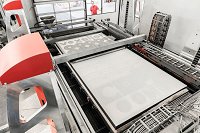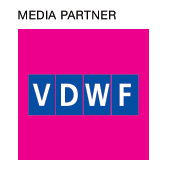Moulds produced in a 3D metal printer
24.01.2019
Hard times for foundries: The boom of 3D metal printing is threatening their market shares for metal-cast components. They need to modernise their production processes.
 Sales of industrial 3D metal printers have increased immensely in recent years. Above all automotive manufacturers, aircraft manufacturers, but also designers recognise the potential of the manufacturing technology, which offers many advantages. This success story puts foundries under pressure: Does 3D metal printing herald the end of traditional metal casting?
Sales of industrial 3D metal printers have increased immensely in recent years. Above all automotive manufacturers, aircraft manufacturers, but also designers recognise the potential of the manufacturing technology, which offers many advantages. This success story puts foundries under pressure: Does 3D metal printing herald the end of traditional metal casting?
Currently, 3D metal printing, such as Direct Metal Laser Sintering (DMLS), competes with foundries in a relatively small segment. DMLS systems are most suitable for smaller components. 3D-printed components for aerospace also require time-consuming certification, which metal casting has had for decades. Direct 3D metal printing is also expensive. This is not only due to the high costs of metal powder, but also the high cost of 3D printers as well as the slow building speeds. Furthermore, components from printers using metal powder usually require manual post-processing after printing, for example to remove support structures and base plates. With some 3D printing techniques, sintering in an oven or hot isostatic pressing (HIP) is necessary to achieve high component density and enough resistance.
The bottom line is that the average price for 3D-printed metal components is around €300 per kg for aluminum, €400 for stainless steel and up to €1,300 per kgm for special alloys. The price of pure cast steel, on the other hand, is around €6.50 to 32 per kg. In this article you will learn how 3D printing saves up to 75% of the costs for sand casting.
In view of this, things look good for traditional foundries. But what happens when 3D technology evolves, build spaces increases, materials become cheaper, post-processing is automated and the technologies are suitable for series production?
Printing sand casting moulds without toolsFor Voxeljet, a supplier of industrial 3D printing systems, traditional foundries are by no means on the verge of collapse: they too can economically produce components with complex geometries in small series and thus ensure their future competitiveness — provided they succeed in building complex casting molds faster and more cost-effectively than today and without the need for expensive special tools. This goal can be achieved, for example, by using 3D printers, which print sand moulds without tools by means of rapid casting. Voxeljet names its own VX4000, which, with a footprint of 4,000 x 2,000 x 1,000mm, is the world's largest 3D printing system for sand molds, the company points out. Time-saving, optimum system utilisation
The advantages of 3D printed casting moulds: It requires neither CNC milling nor other special tools, the freedom of design is less restricted. Interior geometries with a resolution of up to 300dpi can be achieved. Unlike 3D metal printing, no printed support structures are required. With Voxeljet printing systems, several components can be built on top of each other in a single printing process. This saves time and optimises the utilisation of the systems. The materials used are already used in foundries today and can be easily combined in hybrid parts. Finally, foundries report that they save a great deal of time when they manufacture complex sand-casting moulds.
Metal 3D printing will continue to gain in importance and take over significant market shares from previously metal-cast, small and medium-sized components. Even then, it will not completely replace series casting processes, but it will secure significant sales shares. Foundries should therefore modernize their production at an early stage.
*Dr. Ingo Ederer is CEO of Voxeljet AG




































